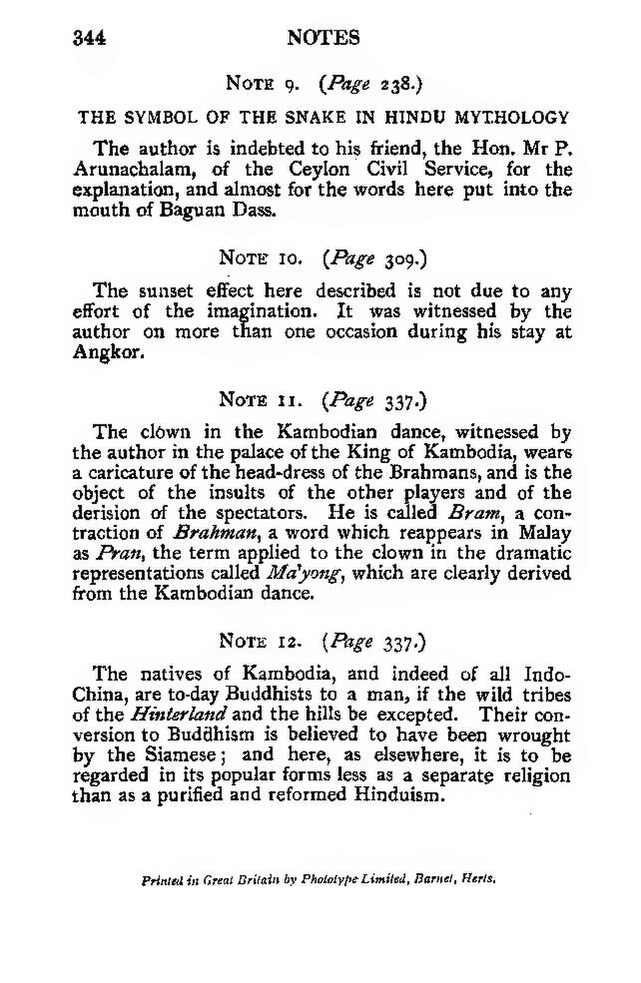Note 9. (Page 238.)
THE SYMBOL OF THE SNAKE IN HINDU MYTHOLOGY
The author is indebted to his friend, the Hon. Mr P. Arunachalam, of the Ceylon Civil Service, for the explanation, and almost for the words here put into the mouth of Baguan Dass.
Note 10. (Page 309.)
The sunset effect here described is not due to any effort of the imagination. It was witnessed by the author on more than one occasion during his stay at Angkor.
Note 11. (Page 337.)
The clown in the Kambodian dance, witnessed by the author in the palace of the King of Kambodia, wears a caricature of the head-dress of the Brahmans, and is the object of the insults of the other players and of the derision of the spectators. He is called Bram, a con- traction of Brahman, a word which reappears in Malay as Pran, the term applied to the clown in the dramatic representations called Ma'yong, which are clearly derived from the Kambodian dance.
Note 12. (Page 337.)
The natives of Kambodia, and indeed of all Indo- China, are to-day Buddhists to a man, if the wild tribes of the Hinterland and the hills be excepted. Their con- version to Buddhism is believed to have been wrought by the Siamese; and here, as elsewhere, it is to be regarded in its popular forms less as a separate religion than as a purified and reformed Hinduism.
